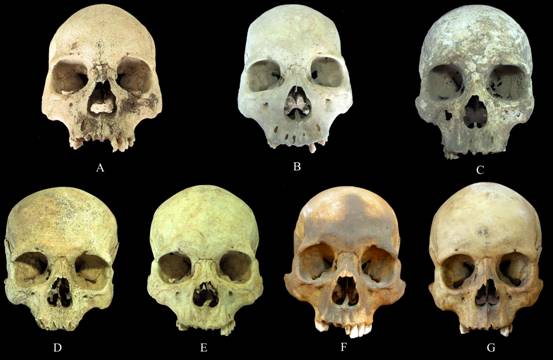The Holocene is the primary epoch for the formation, differentiation and migratory patterning of Modern human populations throughout the world. Many changes in Homo sapiens’ lifestyle, culture, technology, behaviour and economic patterning occurred. Analysis of Holocene human remains is very important to understand the development of Modern human populations and how this development was influenced by environmental and/or cultural processes.
The Qinling Mountain Range, located in the middle of China, constitutes a natural barrier for many flora and fauna. The Yellow River and Yangtze River are the major river systems in North and South China, which are thought to be the geographic boundary separating northern and southern Chinese populations. In order to test this hypothesis, Drs. Xiujie Wu and Wu Liu, Institute of Vertebrate Paleontology and Paleoanthropology, Chinese Academy of Sciences, and their collaborator, Dr. C. J. Bae from University of Hawaii, collected 19 Neolithic and 15 Modern human cranial samples from north of the Qinling Mountain Range, south of the Yangtze River and in between were chosen for morphometric analysis. Their results as published online in International Journal of Osteoarchaeology (2010),DOI: 10.1002/oa.1190 (http://www3.interscience.wiley.com/cgi-bin/fulltext/123587319/PDFSTART), indicate that cranial variation does exist in Holocene Neolithic and Modern northern and southern Chinese.

Fig. 1: Cranial variations in Holocene Neolithic and Modern northern and southern Chinese. (Courtesy of Drs. Xiujie Wu and Wu Liu)
In the Neolithic sample, the northern Chinese crania are characterised by greater upper face height and orbit height, while the southern Chinese skulls are depicted by a wider nose. The morphology of the crania between the Qinling Mountain range and the Yangtze River feature a mosaic of characters that suggest affiliation with both north and south groups. In the Modern day sample, northern crania are characterised by a broad and wide face, and a tall nose. From the Neolithic to Modern day, a series of microevolutionary processes that apply to both the northern and southern samples can be discerned. Overall, the head gets lower, the face and nose become narrower and the orbits tend to be narrower and higher.
“Our results support the suggestion that the Qinling Mountain Range and the Yangtze River represent a natural barrier to the movement of Chinese populations,” said Dr. Xiujie Wu, “Climatic variation and the transition to an agricultural lifestyle are proposed as the primary factors influencing human craniofacial morphologies.”
